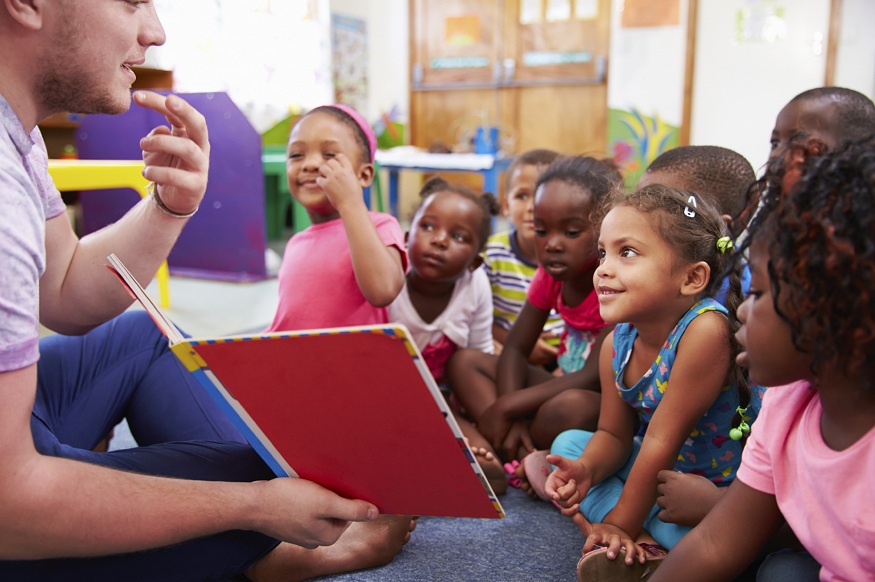Lerman kindergartens and French nursery schools have a different vision of the well-being of the little ones they welcome. France sees in the child a future student who must be prepared for learning and disciplined with strong instructions, from which teachers do not escape, while Germany treats him as the child he is and favors their well-being and the development of their autonomy.
Almost twenty years ago, at the beginning of the 1990s, we, with a German colleague (Brougère and Büttner, 1993), chose the angle of child well-being to work on the question of children’s rights. the child at the level of pre-school institutions, Kindergarten and nursery schools, with German educators and French teachers
Beyond the differences between a French kindergarten…. The International Convention on the Rights of the Child (1989) was then quite new, little known and far from being taken into account in France – if indeed it is today. The question of the well-being of the child appeared to be central, especially for the Germans. But, behind it, we find that of the good of the child and its appreciation by the adult. Who “says” the good (or even the well-being) of the child: the adult or the child himself? What is the place of the child’s autonomy in taking into account this well-being, understood as the feeling of feeling physically and psychologically well within institutions? The question had been asked based on the anecdote of a child “barefoot in the snow” and the ban imposed, for his own good, by the educator.
The French teachers, for their part, introduced the question of the pupil into the debate: “ The well-being of the child is not necessarily that of the pupil ”. Without, goodof course, to look for the child’s discomfort, but its real development, the French teacher feels responsible for the well-being of the pupil, for the good at school (in every sense of the word), which limits the autonomy of the child, understood as the pupil’s autonomy, which is none other than that of the future adult. To the question of knowing who says the good of the child was added a tension between current well-being and future well-being: education, knowledge… Two opposing visions: a school model (French) and a socializing model (German). Since then, debates on preschool have not been lacking in France and, novelty, have been invited to Germany. According to the results of the international Pisa 2006
The Program for International Student Assessment (Pisa) is a…, the question of academic success has a place in the German pre-school debate today. Programs have been proposed by the Länder and the question of learning is more present there. But new research shows that the contrast persists between the two systems or, rather, that the way actors construct it on each side of the Rhine persists. We will illustrate this situation with the results of comparative research which, in addition to Germany and France, took into account Italy, England and the United States (Brougère and Vandenbroeck, 2007). It was a question of articulating the comparison of pedagogies and the reception of the children of immigrants within the framework of collective interviews between teachers or between parents.
In this text, we rely on the speeches of…. The interview was stimulated by the presentation of various films made as part of the research, which traced, each in twenty minutes, a day in a class welcoming children aged 4 to 5 from their own country or from two foreign countries. We will focus more particularly on the reactions of German educators to the French film shot in Paris and those of French teachers to the German film shot in Berlin.
Perception of France by German educators
What strikes the German educators is the stress, both for the teacher and for the children, which seems visible to them in the images and is linked to the rhythm, the strong presence of repeated requests by the adults, the instructions data – which the French call “consignes”, a term that we were unable to translate. Thus appears the visibility of a school form, which passes by the permanent teaching direction and by the discipline, invoked as a necessity with regard to the number of children (one adult for a significant number of pupils). But what also strikes the Germans is what they perceive in the teacher as coldness, linked to a posture of distance and estrangement vis-à-vis her students: ” She was never at the level of the children’s eyes “. Added to this, when the children show her the work in progress or finished, the fact that the teacher often says that it is not good, that it is not going well. Knowing the teacher, we knew her strong empathy for her students, some of whom were in very difficult family and/or economic situations. But it is true that in her performance as a teacher, she shows both empathetic distance and egalitarian treatment of children (which does not prevent her from supporting children in difficulty more strongly, but in a relationship that is always marked by logic of learning).
5The German educators find that there is a lot of work on the table, and point to the break, very visible in the image, between the moments of instruction with the teacher and the moments of fun with the animator who takes takes care of evening care. This one offers a performance of a completely different nature, by entering into the children’s game or offering them some of them. The contrast is thus maximum, especially since the animator also shows many emotional gestures towards one of the children followed in the film.
In this vision of France, the German logic emerges for which a good and warm relationship between the educator and each child is an important condition, perhaps the most important for the success of learning at this age .

